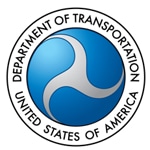
• Set minimum safety requirements and conduct inspections of private crossings located on oil train routes; • Authorize first-class cities, which are exempt, to opt into the UTC crossing inspection program; and • Require railroads that haul crude oil to provide financial verification that they have the means to address a reasonable worst case spill of oil.
In 2015, Gov. Inslee proposed legislation and ultimately signed into law ESHB 1449 that funds additional federally certified rail inspectors; increases regulatory fees for railroads that haul crude oil; and allows state inspectors to enter private shippers’ property without a federal escort. The new rules are the result of that legislation. “Today the UTC takes steps towards ensuring our railways are as safe as possible, but there is still work to do to safeguard the people and environment of Washington,” said Inslee. “The improvements made today to our state’s rail safety program show that we are serious about rail safety and will take what action we can on a state level to address the dangers posed by oil trains.” Congress last year delayed requirements that railroads install anti-collision safety technology, known as “positive train control,” and allowed the U.S. Secretary of Transportation to extend timelines for phasing out older oil tank cars that carry the more volatile crude oil from the Bakken oil fields in North Dakota to west coast refineries. The Federal Railroad Administration has primary jurisdiction over the transportation of oil-by-rail. The UTC supports the FRA’s efforts by performing rail inspections and issuing notices and violations for non-compliance with federal railroad safety regulations on behalf of the FRA. The UTC also maintains jurisdiction over rail crossing safety. A 2015 study conducted by the Dept. of Ecology and the UTC delivered recommendations to Gov. Inslee and the Legislature to address risks to public health and safety associated with oil transportation. The commission’s rail safety recommendations were incorporated into Governor Inslee’s legislation (ESHB 1449). The commission crafted the new rules with the help of industry and environmental stakeholders along with public feedback. The new rules are effective March 11. The UTC regulates railroad safety, including approving new grade crossings and closing or altering existing rail crossings, investigating train accidents, inspecting railroad crossings, approving safety projects and managing rail safety education through Operation Lifesaver.
 It’s no secret that freight rail and rail transit services are growing. With transit ridership breaking records year after year and expanded domestic fuel production putting more energy freight on the network, the rail industry in North America just continues to grow. This growing demand for rail services is exactly why the new
It’s no secret that freight rail and rail transit services are growing. With transit ridership breaking records year after year and expanded domestic fuel production putting more energy freight on the network, the rail industry in North America just continues to grow. This growing demand for rail services is exactly why the new